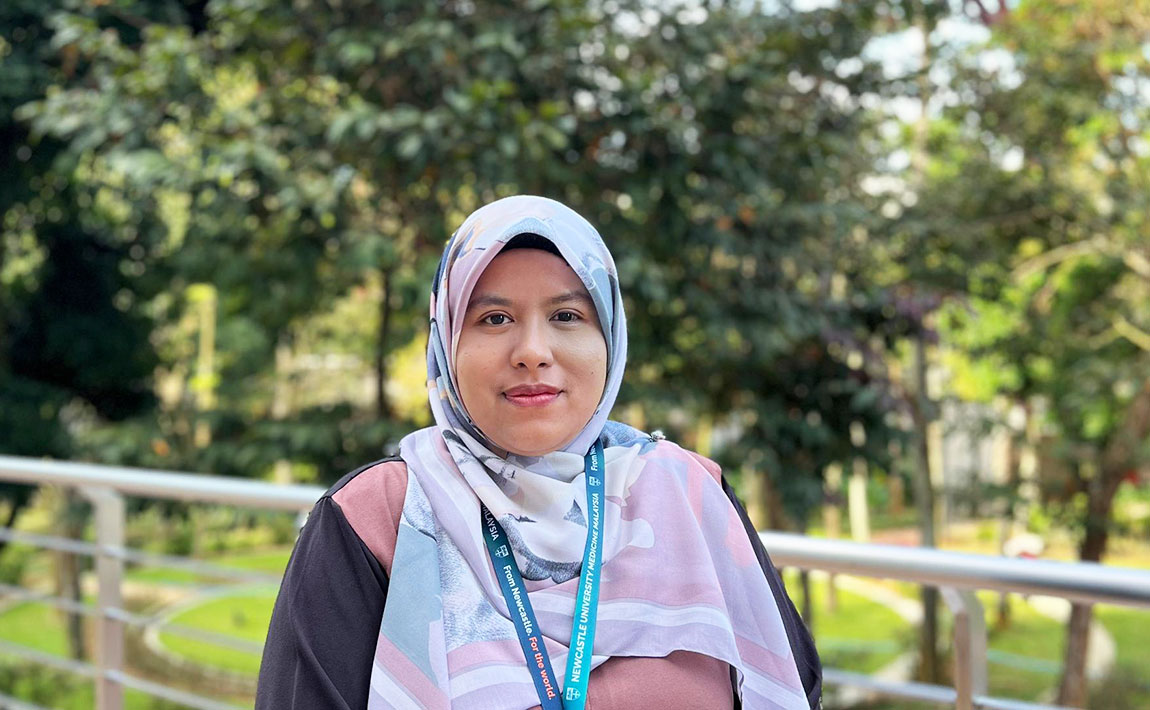Deep-Diving into Anatomy Instruction at NUMed
Understanding the intricate workings of the human body is essential as it serves as the foundation upon which medical knowledge is built.
22 April 2024
A central pillar of medical education is the field of anatomy. Understanding the intricate workings of the human body is essential as it serves as the foundation upon which medical knowledge is built. At Newcastle University Medicine Malaysia (NUMed), we provide aspiring doctors pursuing our acclaimed Bachelor of Medicine, Bachelor of Surgery (MBBS) degree engaging, interactive and immersive anatomy modules to give them a competitive edge.
Anatomy classes at NUMed are delivered face to face, with a mixed mode of lectures and practical sessions, giving students an opportunity to enhance their theoretical knowledge with hands-on experience.
“Our anatomy lectures are not merely didactic, but they are interactive with the application of numerous tools, such as OMBEA, VIVOX, and SOCRATIVE, to enhance students’ engagement,” shared Dr Nurul Uyun Abdul Aziz, the Anatomy Lead at NUMed.
The practical sessions, on the other hand, are conducted in small groups, employing student-centred learning with peer teaching. Up to four lecturers are assigned for each practical session to optimise student-teacher engagement and active discussion. Plastic models are also utilised, complemented by a 3D Complete Anatomy App to facilitate 3D visualisation of the anatomy structures. This is further supplemented with formative “spotters” involving practice questions on pinned structures.
“The 3D Complete Anatomy App from Elsevier is a digital tool that enables users to study and interact with detailed anatomical models in a virtual environment. Incorporating animations and simulations, they provide an immersive learning experience with augmented and virtual reality support, offering a fresh viewpoint on anatomy teaching by creating a sense of reality and allowing for formations and examination from all angles,” elaborated Dr Nurul Uyun.

NUMed’s anatomy curriculum for its MBBS programme is identical to that offered at the UK campus. It includes two years of “Essentials of Medical Practice” (EOMP), encompassing 25 units, to prepare MBBS students for advanced and clinical practice. Key subjects cover anatomical sciences, such as gross anatomy, histology, and embryology, together with other subjects such as physiology, pharmacology, and genetics. The integration of anatomy in the case-based EOMP curriculum allows students to apply the basics of anatomy in clinical scenarios during practical examination, and to hone communication and reasoning skills.
If you are interested in pursuing research in the field of anatomy, you will find solid support at NUMed. An Anatomy Working Group (AWG), comprising eight lecturers with different multicultural and research backgrounds, all of whom are active members of the Malaysian Anatomy Association (MAA), provides a strong foundation and platform for research.
“The research conducted by the AWG members include clinical anatomy, anatomy education, forensic anatomy, and animal experimentation. The university also has a Research Management Group (RMG) committee to ensure that the quality of research projects are up to standard. NUMed students will have opportunities to assist us in the research work. Some of them gain experience working as research assistants, which gives them exposure to data collection, data analysis, and literature writing,” explained Dr Nurul Uyun.
Students who need additional help may also take advantage of the assistance provided by the Student Support Team, which is led by NUMed’s Dean of Student Affairs. Among others, the team offers pastoral/welfare support for those who might have personal issues or require one-to-one study skills support. AWG lecturers are also available to serve as mentors.
Beyond academics, you’ll also find a myriad of student associations at the campus that are active in planning and carrying out community outreach initiatives. In 2023, for example, the university, in collaboration with AEON Bukit Indah, Elsevier, and Legoland Resort Malaysia, held a World Anatomy Day (WAD) outreach programme at AEON to educate the public on anatomy instruction. There was also a programme for international school children to heighten awareness on anatomy education and careers as a medical health professional.
“These events provided valuable experiences for our students, allowing them to contribute to society as they prepare to become good medical professionals,” shared Dr. Nurul Uyun.
There are many other opportunities that you can explore as an MBBS student at NUMed. If you’re eager to delve into medical education, check out what our Clinical Teaching Fellows shared with The Star here.
